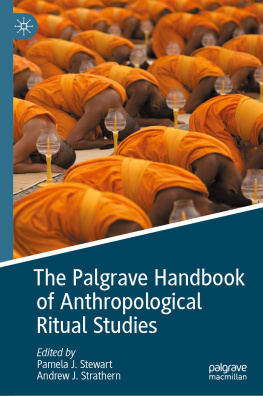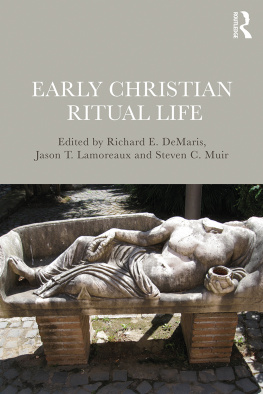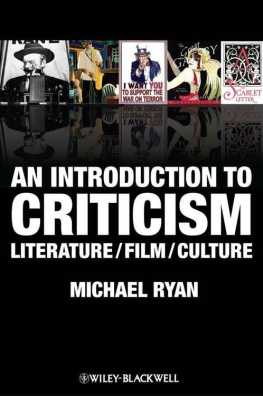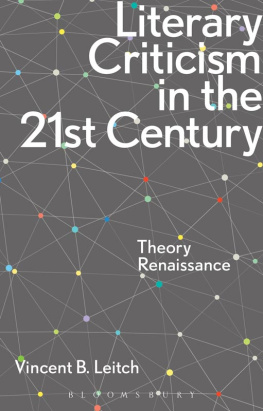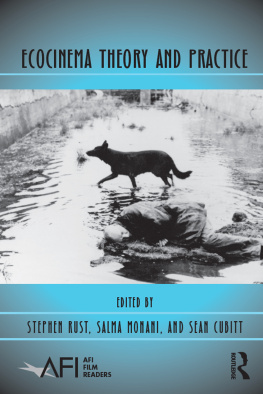Ronald L. Grimes - Ritual Criticism: Case Studies in Its Practice, Essays on Its Theory
Here you can read online Ronald L. Grimes - Ritual Criticism: Case Studies in Its Practice, Essays on Its Theory full text of the book (entire story) in english for free. Download pdf and epub, get meaning, cover and reviews about this ebook. year: 2010, publisher: Createspace Independent Publishing Platform, genre: Religion. Description of the work, (preface) as well as reviews are available. Best literature library LitArk.com created for fans of good reading and offers a wide selection of genres:
Romance novel
Science fiction
Adventure
Detective
Science
History
Home and family
Prose
Art
Politics
Computer
Non-fiction
Religion
Business
Children
Humor
Choose a favorite category and find really read worthwhile books. Enjoy immersion in the world of imagination, feel the emotions of the characters or learn something new for yourself, make an fascinating discovery.

- Book:Ritual Criticism: Case Studies in Its Practice, Essays on Its Theory
- Author:
- Publisher:Createspace Independent Publishing Platform
- Genre:
- Year:2010
- Rating:3 / 5
- Favourites:Add to favourites
- Your mark:
- 60
- 1
- 2
- 3
- 4
- 5
Ritual Criticism: Case Studies in Its Practice, Essays on Its Theory: summary, description and annotation
We offer to read an annotation, description, summary or preface (depends on what the author of the book "Ritual Criticism: Case Studies in Its Practice, Essays on Its Theory" wrote himself). If you haven't found the necessary information about the book — write in the comments, we will try to find it.
Ritual Criticism: Case Studies in Its Practice, Essays on Its Theory — read online for free the complete book (whole text) full work
Below is the text of the book, divided by pages. System saving the place of the last page read, allows you to conveniently read the book "Ritual Criticism: Case Studies in Its Practice, Essays on Its Theory" online for free, without having to search again every time where you left off. Put a bookmark, and you can go to the page where you finished reading at any time.
Font size:
Interval:
Bookmark:
Ritual Criticism
Case Studies in Its Practice,
Essays on Its Theory
Second Edition
Ronald L. Grimes
Copyright 2010 byRonald L. Grimes
Publishedby Ritual Studies International, Waterloo, Canada.
Last revised:September 9, 2016
Author's Website: http://ronaldLgrimes.twohornedbull.ca
All rights reserved.
No part of thispublication may be reproduced, stored in a retrieval system, or transmitted,
in any form or by any means, electronic, mechanical, photocopying, recording,
or otherwise, without prior written permission of the author.
Grimes, Ronald L.,1943
Ritual Criticism:Case Studies in Its Practice, Essays on Its Theory
Second Edition
ISBN 10: 1453758240;EAN 13: 9781453758243
1. Rites andceremonies. 2. Rites and ceremoniesstudy and teaching. 3. Rites andceremoniesNorth AmericaCase studies. 4. North AmericanReligious life andcustoms.
ALSO BY RONALD L.GRIMES
The Craft of RitualStudies, Oxford University Press
Ritual, Media, andConflict, Oxford University Press
Rite Out of Place:Ritual, Media, and the Arts, Oxford University Press
Deeply into the Bone:Reinventing Rites of Passage, University of California Press
Ritual Criticism, 2ndedition, Ritual Studies International
Readings in RitualStudies, Prentice-Hall
Marrying &Burying: Rites of Passage in a Mans Life, 2nd edition, Ritual StudiesInternational
Fictive Ritual,Ritual Studies International
Symbol and Conquest:Public Ritual and Drama in Santa Fe, 2nd edition, Ritual Studies International
Contents
Notes
This book was written with the financial support of a grantfrom the National Endowment for the Humanities through the School of AmericanResearch in Santa Fe, New Mexico, which provided the rich geography andcongenial scholarly atmosphere necessary for its completion. The WilfridLaurier University Research Office also provided funds for some of thefieldwork that forms the basis of the case studies. I am especially indebted toTom Driver and Ruel Tyson, who bored deeply into the entire manuscript, took meto task, encouraged me, and posed many telling questions. My thanks go to theresearch staff and scholars in residence at the School of American Research.They were provocative and exceedingly tolerant of my struggles to turn theshifting sands of a manuscript into the solidity of a book. Others who readparts of it or responded to oral presentations and provided much neededcritique and support include Kathleen Ashley, Fred Clothey, Jenny DeBouzek,Madeline Duntley, James Lopresti, Tom Peterson, Susan Scott, Donna Seamone,Mark Searle, and Tom Sinclair-Faulkner, along with members of the RitualStudies Group of the American Academy of Religion and faculty in thedepartments of Religion and Culture, Philosophy, and Anthropology of WilfridLaurier University
I have beentold by several people that ritual criticism is my most distinctive scholarlycontribution. Although this is not my view, Ritual Criticism, partlybecause it espouses aspects of performance theory, has become my mostcontroversial book. Catherine Bell worries that performance theoryrests of course on the slippery implications of an extended metaphor (Bell1992:42). Because she considers performance theories to be mere analogies, sheconstrues ritual criticism as if it were theatre criticism. She indicts VictorTurner and me for making ourselves into a peculiar kind of audience necessaryto the ritual event (1992:38-40). The performance analogy, she thinks, is noimprovement on that other, even more revered analogy, ritual as a text that onecan read. Both theories, claims Bell, require interpreters to get at tacitmeanings. In her view, performance theorists like to textualize rituals notbecause they are intrinsically like texts, but because we need something thatcan be deciphered, decoded, or interpreted (1992:45). Bell claims thatperformance theorists devalue rites by positing a latent meaning that can bediscerned from a close reading of the surface of a rite. Why do they do so? she asks rhetorically. To make themselves necessarycrassly, to keep themselves employed. She ignores the fact that forTurner drama is both a source of ritual and a part of ritual, notmerely an analog to it. She also overlooks the fact that for me drama is lessan analog to ritual than an object of study, which I compare to ritual.
In a similar vein, CarolineHumphrey and James Laidlaw (1994) claim that ritual criticism isinappropriately based on a theatrical model, even though I explicitly say thatit is not. It is true that I write about ritual in ways that are tutored bytheatre and film, but I also write in the other direction, that is, about thearts in ways that are steeped in the study of ritual. To my mind, neither is amere analog for the other. Rather, they are dynamically interacting forces. Insome situations, they are quite distinct. In others, they are thoroughlyentangled. Ritual traditions, like theatrical traditions, have a multiplicityof ways of courting and avoiding criticism, and it is this variety that weshould be studying.
One of the most effectiverefutations of claims such as those mounted by Bell, Humphrey, and Laidlaw isUte Hskens collection, When Rituals Go Wrong: Mistakes, Failure, and theDynamics of Ritual (2007). Her book documents traditions around the worldin which ritual criticism is practiced without any urging or imposition byscholars. Hsken and her colleagues show that ritual criticism, far from beingthe invention of analogy-hungry scholars eager to insinuate themselves intoother peoples practices, is an ordinary part of ordinary rituals.
Whoever first exclaimed that religion is not thought butdanced echoed a scholarly as well as a popular attitude. In this view religionand thinking are incommensurate. Such a stereotype implies thatdancingsymbolic of all embodied ritualized aspects of religionis what peopledo when they turn off their brains and that thinking is what they do when theyturn off their bodies. But religions are little nourished by disembodiedreflection, and it is a mistake to assume that dancing one's religion precludesthinking about it.
Because of this pervasivesplit between dancing and thinking, the notion of ritual criticism may seem tobe what philosophers call a category mistake, a self-contradiction compoundedof two mutually canceling ideas. Upon hearing the phrase ritual criticism, acommon response is for the person to look baffled and utter a puzzled What?Ritual and criticism do not initially strike us as bedfellows. They seem likesome mismatched couple doomed for divorce because they did not belong togetherin the first place. Where ritual transpires, one does not ordinarily expect tofind criticism, and where criticism occurs, one does not usually look forritual. A typical strategy that reinforces this dualism is to consign the oneto sacred precincts and condemn the other to the academy.
The aim of this book is todemonstrate the complementarity of ritual and criticism. We shall explore casestudies in which ritual and criticism require one another. Then we shallreflect on ways this mutuality alters conceptions of both ritual and criticism.The difficulty is how to make visible what is often invisible: the criticaldimensions of ritual. To accomplish such an aim successfully is to deny thepersistent tendency in our society to isolate the inspired body from theinquiring mind, as if these were not only separable but enemies.
There are several reasons onemight find it worthwhile to engage in ritual criticism: to enable the revisionand construction of more effective rites; to negotiate among conflictingalternatives in a highly pluralistic culture; to protect oneself fromexploitation by ritual means; to ground aesthetic, moral, and religiousjudgments in the tangible stuff of ceremony and celebration. Anyone who hasstruggled to plan an effective wedding or birthday party, been unable to decidebetween private devotion or public worship, or been lured into (or kept awayfrom) public demonstrations against his or her own better judgment has reason tobe interested in the problem of assessing rites.
Font size:
Interval:
Bookmark:
Similar books «Ritual Criticism: Case Studies in Its Practice, Essays on Its Theory»
Look at similar books to Ritual Criticism: Case Studies in Its Practice, Essays on Its Theory. We have selected literature similar in name and meaning in the hope of providing readers with more options to find new, interesting, not yet read works.
Discussion, reviews of the book Ritual Criticism: Case Studies in Its Practice, Essays on Its Theory and just readers' own opinions. Leave your comments, write what you think about the work, its meaning or the main characters. Specify what exactly you liked and what you didn't like, and why you think so.

